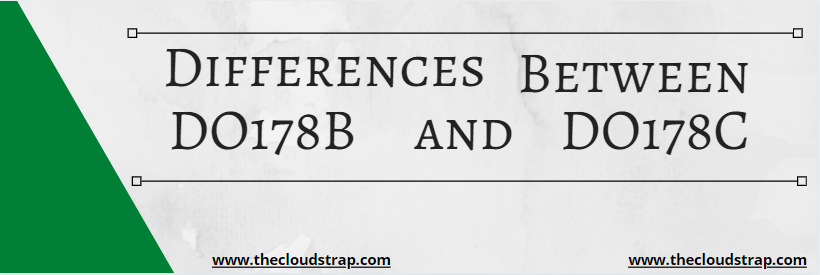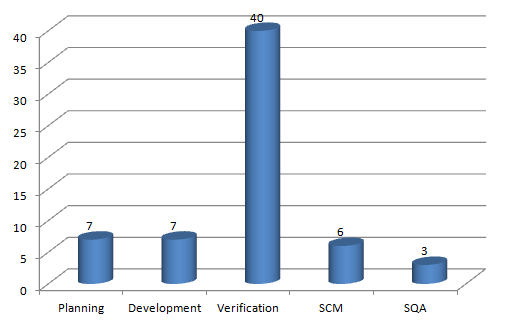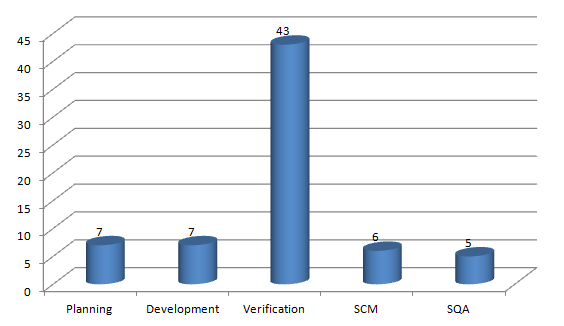
If you are looking for the differences between DO178B and DO178C for an upcoming job interview, you have landed at the right place.
In this article, I have tried to create a top collection of DO178C interview questions focused on the differences between DO178B and DO178C. These questions are constantly being asked in most of aerospace companies for entry-level and experienced level positions. I have spent many hours compiling these differences and preparing the sample interview questions.
So, I hope you will enjoy these questions on the differences between DO178B and DO178C. I hope this would be helpful for both fresher and experienced professionals.
Therefore, After reading the complete article if you think that I have missed any other aspects, please write in the comment box. It will be definitely helpful for others.
Good luck with your interview!
What are the major differences between DO-178B and DO-178C (or ED-12B and ED-12C)?
DO-178C/ED-12C was created to address the known issues/errors in DO-178B/ED-12B and also to address the technological advancement in aviation software.
The major differences between DO178B and DO178C could be categorized in the following ways:
- Error and Inconsistencies: DO178C addressed the known errors or issues from DO-178B/ED-12B.
- Wording Improvement: There was a significant improvement in wording in DO178C in order to improve the correctness and preciseness.
- Consistent Terminology: DO178C revised the glossary to address consistent terminology.
- Objectives and Activities: DO178C refined the objectives and activities. There are also additional objectives for Level-A software.
- Supplements: This is the major new feature added in DO-178C to address the new programming paradigm and new software development techniques such as Model-Based Software Development. These technology supplements include the following: Object-Oriented Technology, Model-Based development and verification, Formal Methods, and Software Tool Qualification.
- New Topic Inclusion: There are several new topics included in DO178C such as:
- Parameter Data Item File (PDI)
- Verification of Parameter Data Item File
- DO178B clarification: The definition of MC/DC was updated in DO178C.
Why DO-178C/ED-12C was introduced?
The DO-178A document was published back in 1985. The civil aviation industry and certification authorities have been using the DO-178B since 1992. The aviation industry evolved a lot over the next 20 years and observed rapid changes in the nature of software development methodology.
For example, more and more aviation companies started using the Object-Oriented Programming paradigm and Model-Based Software development approach. Over time, there were also a lot of questions/clarifications raised regarding the content of DO-178B. There were several CAST papers and other clarifications too.
In 2011, RTCA and EUROCAE published DO-178C, and ED-12C respectively to address all the clarifications and also included the new features.
What is the meaning of supplements?
A supplement is basically a technical document that gives guidance or explains how to add, remove, modify, and replace DO-178C/ED-12C objectives, processes, and activities based on the usage of a particular technology type.
A supplement document also needs to be considered with the same importance as the core DO-178C/ED-12C documents.
The applicant should evaluate the technology and the respective supplement for a given project.
What are the new features of DO-178C/ED-12C?
Here are a few new features that got added in DO-178C/ED-12C:
- Parameter Data Item File was newly included in DO-178C.
- There are several supplement documents introduced in DO-178C:
- Software Tool Qualification Considerations
- Model-Based Development and Verification Supplement to DO-178C and DO-278A
- Object-Oriented Technology and Related Techniques Supplement to DO-178C and DO-278A
- Formal Methods Supplement to DO-178C and DO-278A
Can you explain the new document structure in DO-178C/ED-12C?
The new document i.e. DO-178C/ED-12C maintains the same structure as DO-178B but significant changes were made. The new document is now more precise to ensure consistency. The DO-178C/ED-12C also introduced additional objectives to address the risks associated with the safety-critical software.
The overall document structure now looks like this:
DO-178C: Software Considerations in Airborne Systems and Equipment
- Software Tool Qualification Considerations
- Model-Based Development and Verification Supplement to DO-178C and DO-278A
- Object-Oriented Technology and Related Techniques Supplement to DO-178C and DO-278A
- Formal Methods Supplement to DO-178C and DO-278A
Can you explain the differences between DO-178B and DO-178C in terms of objectives?
There were several additional objectives added in DO-178C/ED-12C. Here is the differences between DO-178B and DO-178C in terms of objectives:
| Serial Number | Life Cycle Process | DO178B Objectives | DO178C Objectives | Reference |
|---|---|---|---|---|
| 1 | Planning | 7 | 7 | Table A-1 |
| 2 | Development | 7 | 7 | Table A-2 |
| 3 | Verification | 40 | 43 | Table A-3 to Table A-7 |
| 4 | SCM | 6 | 6 | Table A-8 |
| 5 | SQA | 3 | 5 | Table A-9 |
| 6 | Certification Liaison | 3 | 3 | Table A-10 |
| Total Objectives | 66 | 71 |


What is DO-331 / DO331 and What is Model-Based Development and Verification?
Do-178C introduced several supplement documents to address the rapid changes in technology in the aviation industry. One of them is DO-331 for Model-Based Development and Verification.
The Model-Based development (MBD) and verification supplement document provide guidance to support the new way of developing software i.e. MBD. The DO-331 mentions the usage of Models as specifications, High-Level requirements (HLR), or Low-Level Requirements (LLR). It also addresses the aspects of auto-code generation from the model.
Model-Based Development (MBD) is a new approach to developing software. MBD allows us to create a software model for a complex control process and simulate it with a real-time environment and generate the auto-code. This new approach is considered as a faster way to develop software that could reduce the overall software life cycle costs. More and more aviation companies are adopting this new approach to develop safety-critical software.
Matlab/Simulink is a well-known and popular tool, which is used for MBD.
What are the supplement documents in DO-178C?
Here is the list of the supplement documents for DO-178C/ED-12C:
- DO-330: Software Tool Qualification Considerations
- DO-331: Model-Based Development and Verification
- DO-332: Object-Oriented Technology and Related Techniques
- DO-333: Formal Methods
What is DO-330? What is DO330?
There were several misconceptions/misinterpretations about the tool qualification in DO-178B. Therefore, Do-178C introduced this new supplement document to clarify all the previous misinterpretations and also set up clear objectives for Tool qualification.
The DO-330 i.e. Software Tool Qualification Considerations document included detailed and precise guidance on the Tool Qualification Planning process, Tool Development Life Cycle and Process, Tool Verification Process, Tool Configuration Management Process and Tool Quality Assurance Process, and Tool Certification Liaison Process.
The Do-178C identifies the need for Tool Qualification and gives guidance on how to determine the Tool Qualification Level (TQL).
The DO-330 focuses on Tool Qualification Process, Objectives, Output Data, and Certification aspects.
What is DO332? What is DO-332?
Most of the Modern avionics software started using Object-Oriented Analysis (OOA) and Object-Oriented Design (OOD) methodology to develop software for safety-critical systems.
Therefore, the DO332 i.e. Object-Oriented Technology and Related Techniques Supplement to DO-178C and DO-278A was introduced to address the new software development approach.
The main purpose of the DO332 is to provide guidance on developing software using Object-Oriented Technology (OOT) and Related Techniques (RT) for safety-critical software and get a sense of confidence in terms of safety.
The document prescribes the objectives for each software level to meet. The objectives could be satisfied by following the life cycle process and producing the output data as evidence.
What is DO-333? What is DO333?
The DO-333 / DO333, Formal Methods Supplement to DO-178C and DO-278A, is a guideline document that was introduced as a supplement copy of DO-178C/ED-12C.
The DO333 provides guidance to the software engineers who use the Formal methods for the airborne safety-critical systems software
Formal methods are basically the mathematical models or techniques for specification, development, and verification of the software aspects in safety-critical systems. The mathematical model or technique could be in the form of discrete mathematics, formal logic, and computer-readable languages.
Software engineers tend to use Formal Methods to establish the correctness and robustness of the design or software.
Here are some examples of uses cases where Formal Methods could be used:
- Worst-Case Execution Timing
- Bounds on Stack Size during software execution
- Deadlock Prevention
When should you apply DO-331?
If a particular project is using the Model-Based Development and Verification environment then the project must be compliant with DO-331.
Therefore, the applicant should follow DO-331 when the MBD approach is used for software development.
When should you apply DO-332?
If a particular project is using the Object-Oriented methodology to develop software, then the project must be compliant with DO-332.
Therefore, the applicant should follow DO-332 when Object-Oriented technology is used for software development.
Note: You can find the differences between DO-178B and DO-178C Here :
Conclusion:
The DO178C document was published recently. Most of the aerospace/aviation companies started following DO178C instead of DO178B for their airborne software. Therefore, most of the companies started asking about the difference between DO178B and DO178C. I have tried to cover most of the important aspects of the differences between DO178B and DO178C.
However, there could be areas that I might have missed to cover. Please feel free to comment below, if you think anything else could be added here in the context of DO178C interview questions.
I have also compiled all the DO178C tables in one document along with the explanation and created a pdf copy of it.
If you want to get the FREE pdf copy, please comment your email ID in the below comment box, I will send you the copy. This document would definitely give you a far better understanding of the DO178C objectives.
Hopefully, this article could help you!
Good luck with your interview.
Cheers!
This post was published by Admin.
Email: admin@TheCloudStrap.Com

This is very useful. I do not see any corrections.
Good to hear!
Was looking for what is new in DO178C and here it is explained clearly
Thank you, Chethan.
Very clear and concise, thanks!
Glad to hear you found it useful.
thank you for writing and publishing this.
Please send your free pdf file to my email below
skbybee@gmail.com
Thank you,
Sandra Bybee
adepuravinder8@gmail.com
Please share free pdf copy
hi thanks for that article. please send a copy of the pdf to cloudstrap@interfolk.co.uk
regards
John Douglas